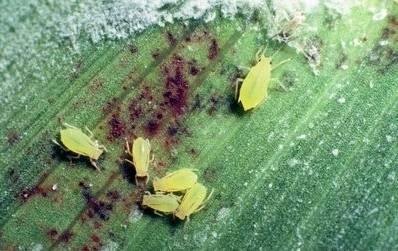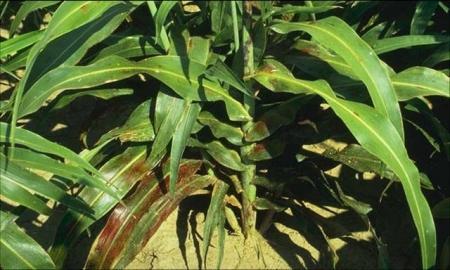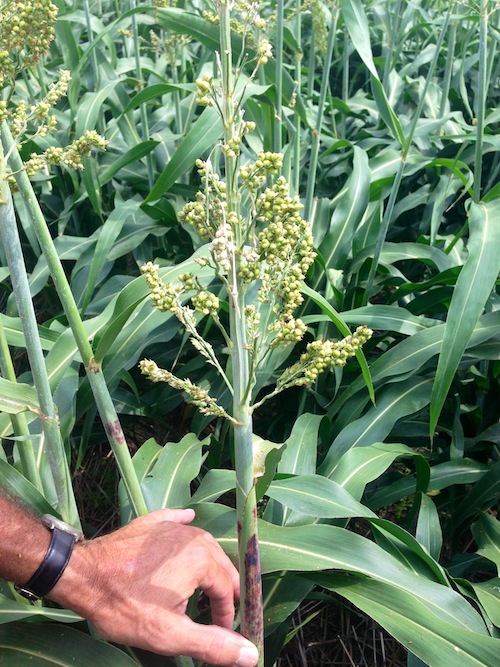Greenbug
Schizaphis graminum

Greenbug nymphs.

Nymphs with feeding damage to leaf.
Greenbugs are small, lime-green or yellow aphids that from densely packed colonies on the undersides of leaves. They have a dark green line down the middle of the back and antennae that are as long or longer than their body.

Sorghum showing greenbug damage on lower leaves.

Damaged panicle resulting from greenbug-induced flower sterility. Note telltale chlorosis on stalk.
Their reproductive capacity is very high and the wingless forms (apterae) mature in five to seven days in warm weather, producing several offspring per day for up to two weeks. While feeding, greenbugs inject salivary compounds that are very toxic to sorghum, destroying chlorophyll in the leaves and turning them a red or rusty brown. As host plants deteriorate, winged aphids (alatae) develop that are capable of wind-assisted dispersal over great distances. Although some greenbugs can survive the winter on wheat in Oklahoma, very few, if any, can overwinter in Kansas. Infestations in Kansas sorghum are initiated by winged migrants carried on the wind from more southerly latitudes. Greenbug damage to sorghum in Kansas has declined greatly since the 1990s, largely due to the evolution of effective biological control, which was formerly suppressed by the widespread use of broad-spectrum insecticides that were also very injurious to predators and parasitoids. However, greenbug injury may still occur at any sorghum growth stage from seedling through soft dough, although it is typically restricted to isolated patches in a field. Greenbugs that feed within flowering panicles will cause flower sterility and heads devoid of grain.
More detailed information on greenbug biology can be found in MF3183: Greenbug.
Please refer to the most recent version of the Sorghum Insect Management Guide for specific control recommendations.
Page last updated on 10/16/2024 by J.P. Michaud.